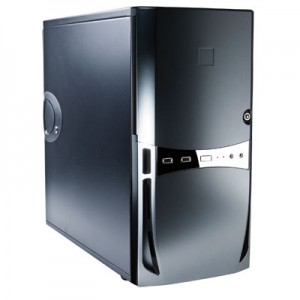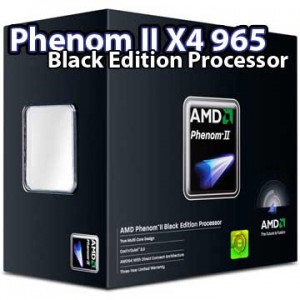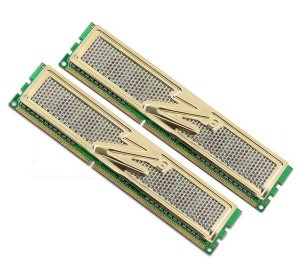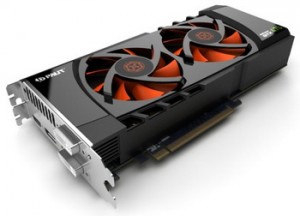Build Your Own Freaking Fast FlightGear PC
Building your own PC
I’ve debated whether it is worth posting an article about building your own PC. Anyone who’s a serious builder can come up with something that fits their budget and performance requirements better than I can. Anyone who’s not a serious PC builder might be better off not messing around with the idea. It’s easy to get yourself into trouble and ruin parts if you don’t know a little bit about what you are doing. On the other hand, it isn’t that hard, and the end result can be a great system for minimum cost.
The Basics
It isn’t really that hard to build your own PC. If you are capable of careful work, know how to screw things together, and don’t mind spending the extra time to research and order parts, then it’s really not too bad. The big payoff in the end is you can have exactly the machine you want at a price that is probably cheaper than anything you could buy off the shelf. Another plus is that you will have a system you can potentially upgrade in the upcoming months and years to stay current without needing to buy a whole new machine every 6 months.
There are some basic things you will need to buy: a case, a power supply, a motherboard, a processor, memory, a heatsink and cooling fan, a video card, a hard drive, and a DVD drive.
Where do you even start?
This is all motivated because my current desktop PC was creaky and old. It had been over a year since I had done any upgrades, and my current machine was a cheap, low-end system to start with.
So let me describe my own thought process. Years ago I used to build all my own machines, but then I kind of gave it up. Technology changes so fast and I completely lost track of all the different processor sockets, ram types, amd versus intel cpu options, SATA, PCI express, etc.
A few years ago I went to the Dell website and speced out a decent low cost machine. I ran that for a while and it was fine, so I hopped back onto the Dell site to see what I could find. Unfortunately by the time I ticked off a couple options to build my own machine, I was way over the budget I was hoping to spend, and I just wasn’t see the options and the level of control to build the machine I wanted — something that would be a killer FlightGear machine.
There are some really great gaming PC builders like Alienware and WidowPC. I took a look at their web sites and wow! it doesn’t take much to spend several thousand $$$ with one of those places. I’m sure you get a great machine, but that was way out of my league. I was hoping to stay well under $1000. I found another PC builder that seemed more in my pricing ball park: www.cyberpowerpc.com. In addition they tell you the *exact* parts you are picking and give you tons of options. Unfortunately I managed to quickly go over budget with them too. I started thinking about specing out a machine at cyberpowerpc, and then going to an online parts store, buying the individual parts, and putting them all together myself. But before I got too far through their site, I got completely lost in the myriad of options.
I decided I’d go visit a parts seller directly and see what I could find there. Two of my favorite sites are New Egg: www.newegg.com (they seem to have some of the lowest prices going, and offer free shipping on many items) and MEI: www.microcenter.com (MEI has a local store in my town and often has good sales if you watch their mailings.) But alas, I floundered trying to find a set of parts at either of these places.
Sigh … I give up! I need help!
To The Rescue … !!!
My little brother saved me. He had already done all the hard research work and had recently built a couple different machines at different price/performance points for his own work. Thanks little brother! It really helped to be presented with a complete list of compatible parts as a starting point. I ended up with a system that was pretty much in my budget and performed better than I was hoping. In my case my brother sold me some spare parts as part of the deal so I ended up coming out even better than if I was doing this all myself from scratch.
Here is the list of parts and their corresponding prices on newegg:
- Case: Antec Sonata Proto (black) $65
- Power supply: OCZ Fatal1ty 550W $70
- Motherboard: Asus M4A88TD-V EVO/USB3 $120
- Processor: AMD Phenom II X4 965 Black Edition 3.4Ghz $140
- After market heat sync: (from my brother’s surplus) $50
- Memory: OCZ Gold 4Gb 240-Pin DDR3 1333 SDRAM (PC3 10600) $50
- Hard Drive: Seagate Barracuda 1TB 7200RPM SATA 3.0G b/s $60
- Generic CD/DVD drive: $20
- Video Card: Palit GeForce GTX 470 1280Mb 320-bit GDDR5 PCI Express 2.0 x16: $260
Total: $835
The Details …
Everyone has their own opinions, different goals and different budgets — one size doesn’t fit all. The PC world moves fast and I can’t even find the same memory any more. But generally 4Gb of DDR3 1333 memory is going to run about $50. Most people will want to make adjustments for their own preferences, their own budget, and the parts that are available at the time.
The case: Antec is a big name in the case world — in case you didn’t know that. (Also that was a pun in case you missed it.) The Sonata Proto is a basic medium tower case. 3 x 5-1/4″ bays, 2 x 3.5″ bays, and 4 internal hard drive bays. It is a solid case, looks clean and professional, has plenty of upgrade potential and has a few nice features. (1) the external bays are setup for slide in rails, but I didn’t have any rails. 🙁 I looked online to see if I could order some and then checked the manual and found out that each bay cover has the rails tucked into the back side. I just had to pop them off — wow, how cool is that! (2) the internal hard drive bays come with anti-vibration gell grommets. Another little nice extra. These are things you might not think about at the shop but you sure appreciate once you get home!
The power supply: I just went with the part my brother speced out. But don’t skimp out here to save a buck. If you are building a gaming PC or a FlightGear PC, you will want a high end video card and those absolutely suck power. Modern video cards are powerful self contained multi-core CPU’s … all on a card with their own cooling fans and everything. The video card I installed required two (2) 25W power cords direct from the power supply to the video card — in addition to the power the card can pull from the PCI express slot. This is an area where things can get tricky, but definitely check the specs and requirements of your video card and make sure you pick a power supply that can deliver. I can tell you from personal experience that you can limp on an underpowered or marginal power supply, but add a little heat or do something that pulls a bit of extra current and your system can go unstable and crash or generate errors. It can be *very* frustrating! So don’t skimp on power!
Next up is the CPU: your basic choices are between Intel and AMD. This is where I start to lose track and my eyes glaze over. Generally it seems like Intel’s fastest processor usually beats AMD’s fastest processor, but you pay a premium for Intel. AMD usually gives you better bang for the buck. I went with the AMD Phenom 965. There’s always a sweet spot in the price curve where going to a faster processor starts costing a *lot* more for just a little bit of improvement. I can’t afford to buy the best of the best, so I don’t need to pay the ultimate premium to buy Intel’s flagship processor. I went for good performance and a good price.
Motherboard: One thing to notice when building your own PC is that usually the CPU + Motherboard + Memory need to be carefully matched. Generally by the time you get around to wanting upgrade in 6-12 months there is going to be a different socket standard for plugging your CPU into your motherboard, there will be a different memory interface standard, and you’ll end up needing to upgrade all three of these at the same time. It just is what it is … On my brother’s recommendation I went with the ASUS M4A88TD-V EVO/USB3. It supports the AMD Phenom processors and DD3 memory. There are many motherboard options. Asus is usually a pretty good name and a lot of the variants center around what extra stuff gets bundled onto the motherboard … sound, video, networking, usb ports, esata, and support for other peripherals.
Memory: I went with my brother’s surplus part stock again here, but he only sold me 4Gb. I decided I needed at least 8Gb total. But when I went shopping, I couldn’t find an exact match for what I already had. I poked around, got some help from a tech guy, and came home with a pair of 4Gb DDR modules (2 x 4Gb). Add that to the 4Gb I already had and I was up to 12Gb total. Rock on! 🙂 I found that for DD3 1333 memory you are going to be spending about $50 per 4Gb of RAM.
Video Card: This is a critical component of a gaming PC. I am building a system to run FlightGear which is a professional flight simulator, but my graphics needs are very similar to other high end 3d games. I have been running nvidia 3d video cards for many years and feel they offer the best drivers and quality for PC game level systems. Additionally I do most of my work under Linux, and nVidia definitely has the strongest and most solid linux support. So I go with nvidia graphics hardware, period. Originally I was shooting for a card in the range of an nVidia GeForce GTX 450, but the general principle is to get as much as you can afford. I ended up with a GTX 470 which was more than I could afford … try and explain that to your wife. 🙂
What about Windows Software? Isn’t that expensive to buy when it doesn’t come bundled with your new 64bit PC?
This is a tough one for me to answer. Actually it’s easy. I run Linux. Go to your old PC, download the latest Fedora (or Ubuntu, or Suse, or your favorite distro) install ISO, burn it to a DVD and you are ready to install Linux on your new PC. Full 64 bit support for free!!! If you are a windows geek and insist on genuine MS proprietary software … well that’s tougher. A lot of people can get a free or discounted copy of Windows through work or school if they can show a work or school purpose for the machine. It doesn’t hurt to ask — unless your sys admins are psycho and black list you from this point on — not saying that would ever happen. But seriously, these days 75-95% of what you do is in your web browser anyway. Linux has open-office, firefox, google chrome, thunderbird, a full development system, flash, skype, gimp and all the tools you would want to use … and most of the time they are free. Come on! You are building your own system, you might as well go the whole way and install Linux on it. Games? They are just a waste of your time anyway, besides you are building this machine to run FlightGear which works really well in Linux. If you really want to spend money with Microsoft and really want to play games, get an Xbox360. Your remaining excuses are now weak and flimsy! Your wife or girl friend or grandmother doesn’t care; she just wants to get on facebook, play farmville, and look at cute kitty cat pictures, that is just as easy with Linux. Ok, QED, done deal … L I N U X 6 4 b i t ! ! !
Final Thoughts
You are probably wondering about things that I ignored or skimmed past. Monitor? Keyboard? Networking? Assembly instructions? Cabling?
Monitor and keyboard? I just use the one from my last computer. If you want something bigger or better, go ahead and get it and plug it in. If you get a super high resolution display, you might need two DVI cables which the GTX 470 supports. The GTX 470 also has HDMI output and another output that is used in the Mac world for their super high res displays. Networking? It’s built onto the motherboard.
Assembly instructions? Well it’s always an excellent idea to skim the manuals for the parts you just bought. They’ll often times include critical information. For instance, the ASUS motherboard manual suggests that if you want to boot of your SATA DVD drive, you should plug it into SATA port 5 or 6 and then go into the bios settings and set that port range to emulate IDE. It turns out the the SATA/IDE setting works on blocks of ports, and you want to leave the lower blocks set at SATA so you can maximize the performance of your hard drive. But hey, this stuff is fun to figure out, that’s why we build our own PC’s, right? 🙂
If you try building your own PC and get stuck, please hesitate to email me. 🙂 I don’t have time to do free PC assembly support.
Looking at all the options: building your own PC is still a great way to get a super performing machine at minimal price. You get to pick and choose all the specific parts and options so you get exactly what you want. If you are jumping in and haven’t built a machine in a while or ever, then feel free to use my shopping list (above) as a starting point and then you can make modifications from there depending on your budget and performance requirements. Spend as much as you can afford! Work slowly and carefully as you assemble the parts. Enjoy running FlightGear at 60 fps with all the bells and whistles turned on!






